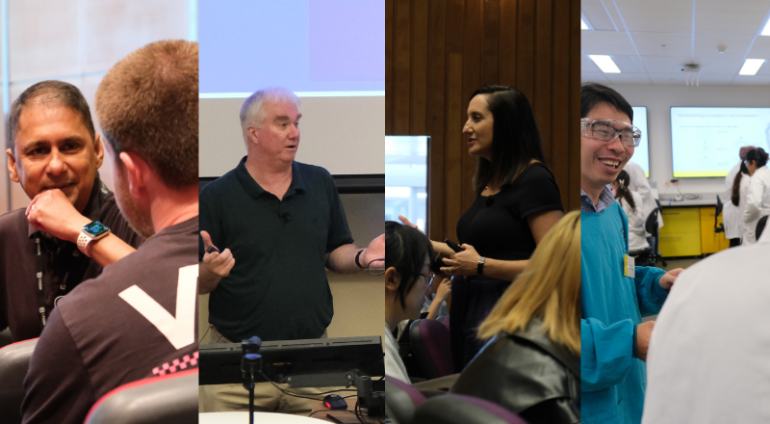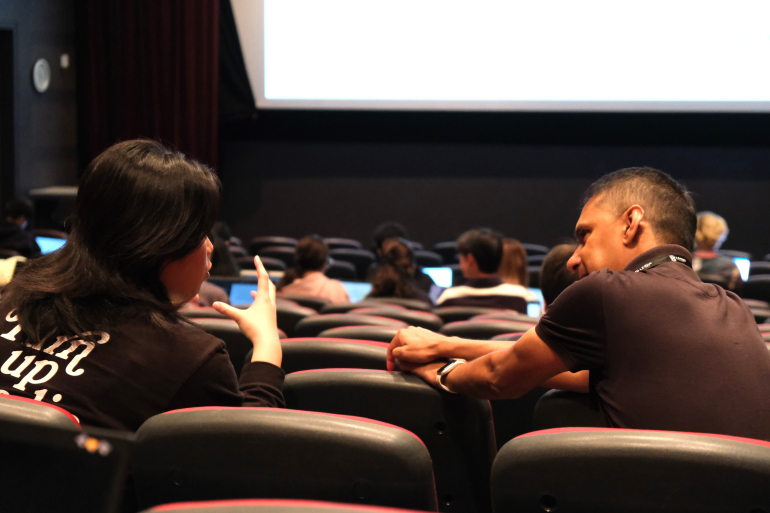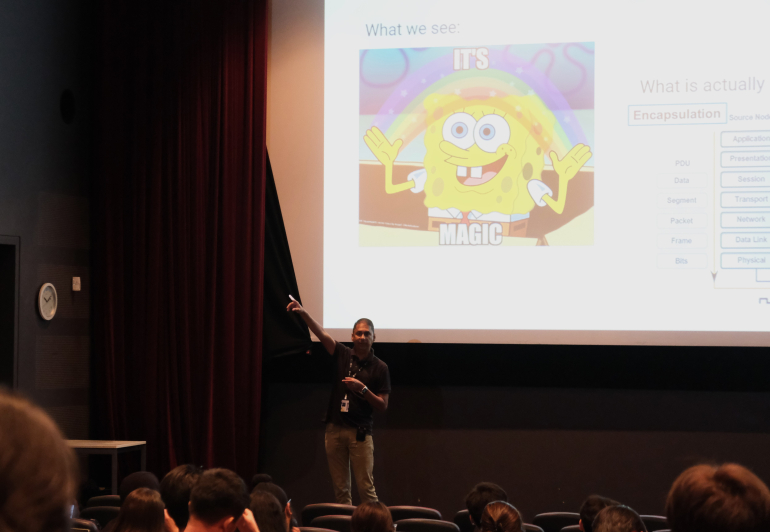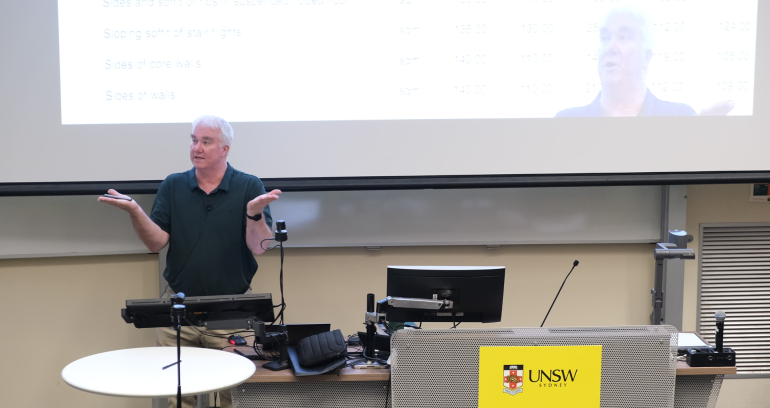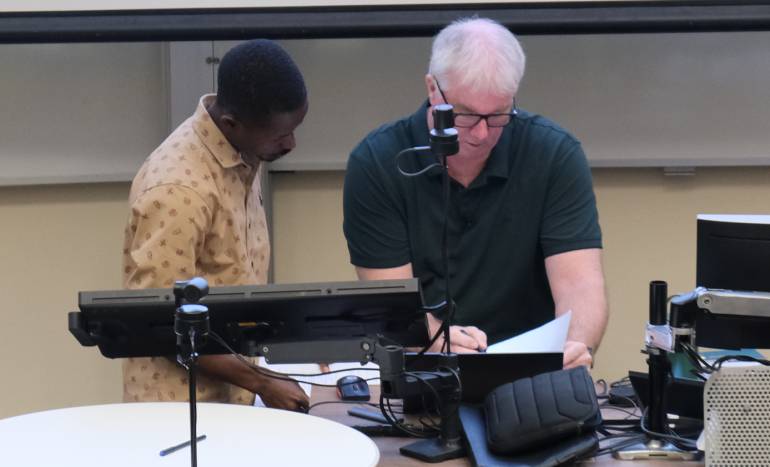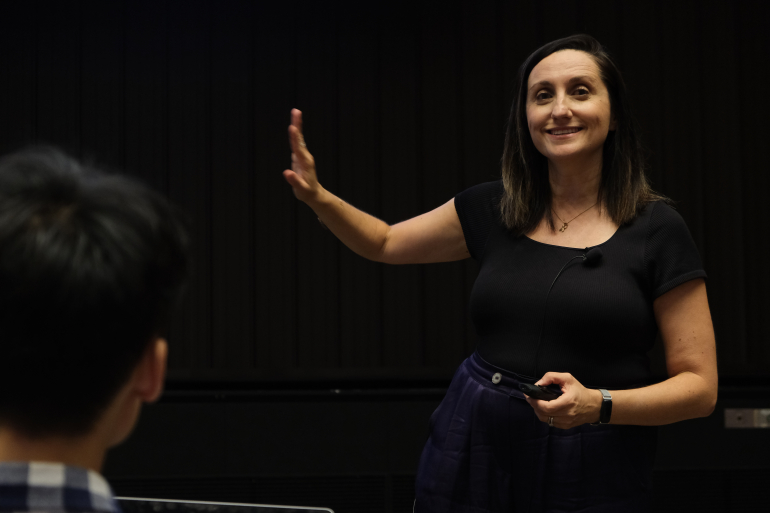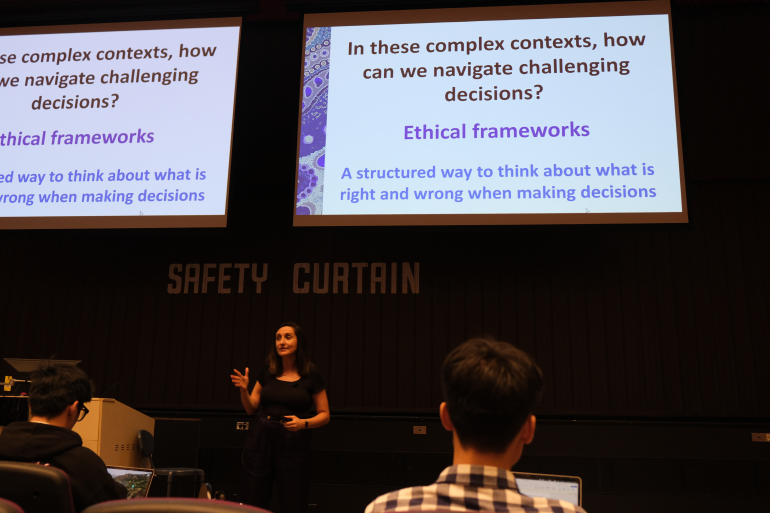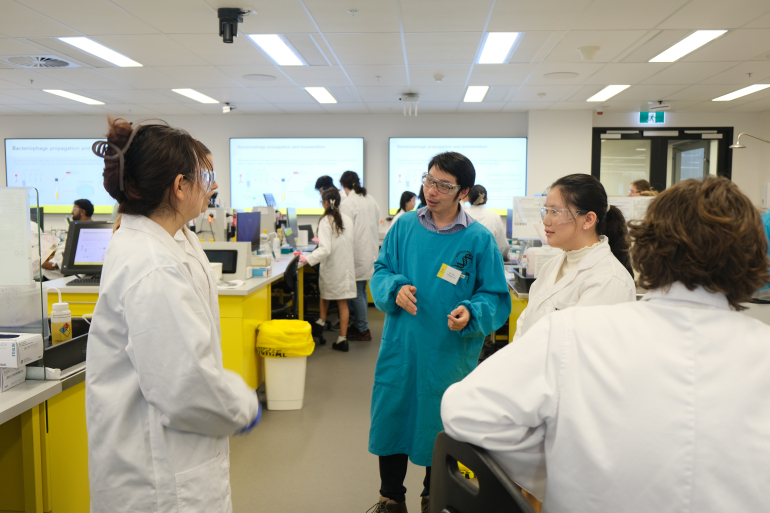By Apple Davalos, Senior Engagement Officer, Career Advancement & EF Program
Published 30 September 2025
Earlier this year, I issued a call to ‘Adopt Apple in your classroom!’, inviting Education Focussed (EF) academics to let me observe their classes with no expectations in mind. The aim was simple: to inform my writing and engagement work in the EF Program by seeing teaching unfold in real time.
I never studied at UNSW myself (apart from the occasional online class), so these visits were a chance to experience EF teaching with fresh eyes. Over four classes in IT, Civil Engineering, Business Management and Microbiology, I saw different styles, a few challenges and small joys that shape the EF teaching experience.
INFS170: Introduction to Networking and Security
Dr Pranit Anand
In Ritchie Theatre, Pranit introduced networking and security through stories from his first job and everyday examples, like leaving passwords in plain sight. The lecture theatre setup wasn’t ideal: lighting was dim and markers were missing, which limited his ability to demonstrate live. Still, he adapted by moving into the aisles, checking in with students, and using Slido to test understanding.
The class showed how EF academics often adjust to practical constraints while still finding ways to connect with students.
CVEN9701: Engineering Economics and Financial Management
Associate Professor Steven Davis
At 4pm, Steve’s lecture on cost estimation was steady and full of worked examples. He broke down technical concepts with references students could follow and used Slido and his own camera setup to keep hybrid learners involved. Students engaged with polls, and Steve responded with patience and humour. The lecture hall was quieter than in other classes, but his systematic approach and practical illustrations kept students tuned in.
It highlighted how EF academics blend expertise with tools that support engagement across formats.
MGMT5050: Responsible Business Professionalism
Dr Gabi Nudelman
Gabi opened her class with energy and warmth, framing business as “not only about money but about doing good.” Originally from South Africa, she combined historical examples, such as apartheid, with structured ethical frameworks to guide decision-making. Students engaged at different levels, but the design of the class made space for reflection and critical thinking.
What stood out was the dual focus: delivering content while also caring for students’ wellbeing and encouraging them to consider their values.
MICR2011: Microbiology 1
Dr Gee Chong Ling
In the lab, Gee moved between groups, adjusting his explanations to each student’s needs. The class was hands-on, with students working through their bacteriophage tests. This was teaching as facilitation: constant small conversations, lots of clarification, and immediate feedback.
The work was intensive, but so too was the satisfaction when students grasped a concept through doing.
Reflections
Across these four classes, I saw the everyday realities of EF teaching. Academics adapt to imperfect spaces and timetables, balance energy and engagement, and carry responsibilities that extend well beyond delivering content.
The joy is in those moments of connection - a student response, a thoughtful question, or a breakthrough in the lab. From the student seat, the EF commitment to teaching quality was visible. In the age of AI, teaching remains both demanding and deeply human.
Read other UNSW Education blogs or submit your own
***
Reading this on mobile? Scroll down to learn about the author.
